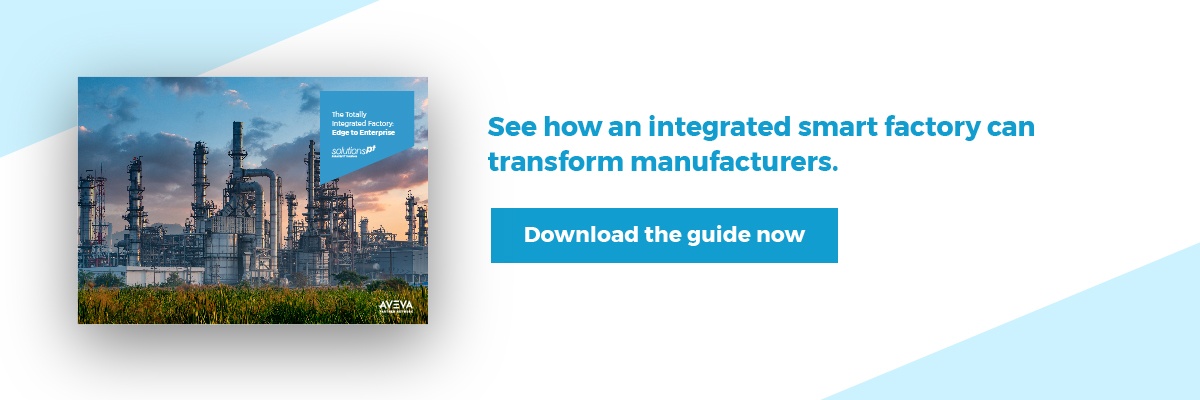Edge computing refers to computing that takes place close to the actual physical location where data is collected and monitored, instead of on a server or using cloud computing. It is called edge computing as it typical takes place at the edge of the network.
It’s important because it provides new ways for businesses to maximise operational efficiency, automate core processes and improve overall performance.

By transforming the way you currently do things, you can establish autonomous systems and give employees the freedom to focus on high-value tasks.
The Benefits of Edge Computing
Lightning Fast Response Times
The number of IIoT devices in use has soared in recent years and this trend is expected to continue.The more of these devices you have in place, the more data transactions you’ll have to manage from devices that are spread across your network. To manage these data exchanges, you need to operate quickly and with minimal latency.
If it’s taking you too much time to analyse data you have at your disposal, then it quickly loses relevance and can’t be utilised effectively. Smart factories rely on having data within milliseconds, any longer than that and problems can arise.
This is why edge computing systems are so vital. In many instances, there just isn’t the time available for data to make the journey to the cloud and back. Keeping your computer models and data analysis as close to the edge as possible eliminates latency issues and allows you to deal with equipment failures and dangerous hazards instantaneously.
This can be the difference between resolving a problem safely and a negative situation escalating.
Part of a Flexible Environment
The most successful businesses are ready to adapt to shifting market demand at a moment’s notice. The more agile your business is, the easier you’ll find it to meet customer demand and ultimately make a profit.
Edge computing provides a solid foundation for you to scale as required. As part of an agile ecosystem, edge computing gives you the resources needed to utilise more automated technology.
By embracing automation and agility, you can harness an ecosystem that’s faster and more efficient than previous iterations. It’s also far easier to maintain and will save costs when implemented. Plus, by utilising edge processing you can unlock potentially valuable data which isn’t being utilised as it’s not currently collected at the edge.
Enough Bandwidth to Keep Up
The sheer volume of data created by IIoT devices needs to be effectively collated, managed and analysed. Current setups don’t have the bandwidth capacity to manage, particularly with the predictions about data over the next few years.
This data is your business’ most valuable asset, so you need to take the necessary steps to ensure it can be utilised in the right way. Without edge computing, bandwidth limitations can quickly become not just a headache for you, but also a serious hurdle to growth.
Edge devices can analyse, filter and compress data locally rather than overwhelming the network which causes bottlenecks. This ensures only the most valuable information is passed through the network to be the basis of important business decisions.
5G-Ready
Recent misinformation surrounding 5G hasn’t impacted its initial deployment around the world. Carriers promise high bandwidth and low latency technologies which will transform the way manufacturers work.
The faster speeds offered by 5G allow for real-time data processing and increased productivity. They also open the door to edge-compute technologies which can harness the power of 5G to drive growth.
Applications that include analytics, machine learning and greater automation will all require support from edge-compute infrastructure. Basically, to benefit from the technological advancements brought on by 5G, you’ll need to invest in edge computing.
Only by bolstering its resilience will you be able to utilise cutting-edge technologies that will give you the edge over your competition.
Finding the Right Edge Solution
It’s vital you invest in an edge solution that’s suited to your specific needs. With so much vital data in use, your organisation needs to consider something that’s reliable, robust and secure.
By adding resilience to the Edge we can bolster the investment that’s been made. Features like fault tolerance, network and power redundancy are important considerations to look out for in any potential solution.
Virtual machine technology is also achievable with edge computing, allowing us to harness the power of snapshots and backups that are prevalent in standard server room architectures.
We need to consider who will be configuring, installing and maintaining these systems at the edge. Edge computing is often deployed where specialist IT staff are not available, so easy to install and maintain systems in these situations are a crucial factor when choosing the right platform.
Investing in edge computing is just one action you’ll need to take to transform your plant into a smart factory.
To see what a fully integrated and connected factory looks like in practice, download our resource.
A Totally Integrated Factory
The guide features a detailed illustration that shows how asset location, across enterprise and the control room can coordinate and collaborate for the benefit of your business. It also considers how the transformation might look and why it’s taking place at all.
By looking at the factors which are forcing these changes within factories, we can better understand the steps we need to take to not only connect teams but also empower workers.
Download your copy now using the link below to see how connected factory systems, edge computing and wider digital transformations can empower your people and lead to success.

![[FREE GUIDE] EMBRACING NEW TECHNOLOGY TO TRANSFORM YOUR FACTORY](https://no-cache.hubspot.com/cta/default/4487147/9d21f2d1-3cef-4512-b927-eb448cf098a0.png)

